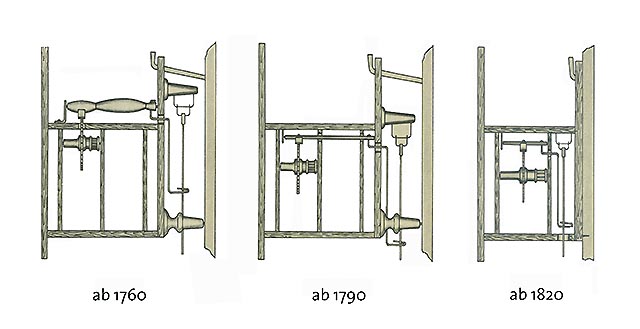
Clock Movements Made of Wood – Economical, Expedient and Extremely Solid
The first Black Forest clock movements to be made of wood were simple foliot clocks with a verge escapement. A decisive step in development was the transition to the far more precise anchor escapement. This resulted in movements for the following clock types:
Standard-size clocks (height of movement, 16-20 cm) with a running time of one day or, as from 1790, eight days.
Mid-size Schotten clocks (height of movement, 10-13 cm), named after the Schottenhof, a farm near Neustadt. The Schwoerer family were the first to produce this type of clock as from about 1820. It came to be the most frequently made Black Forest clock movement.
Small Jockele clocks (height of movement, 7-10 cm), invented around 1790 by Jakob (nick-named “Jockele”) Herbstrieth of Hinterzarten. Another account credits Philipp Scherzinger as being the inventor. From about 1830, the Sorg half-brothers developed truly miniature clocks in Neustadt.